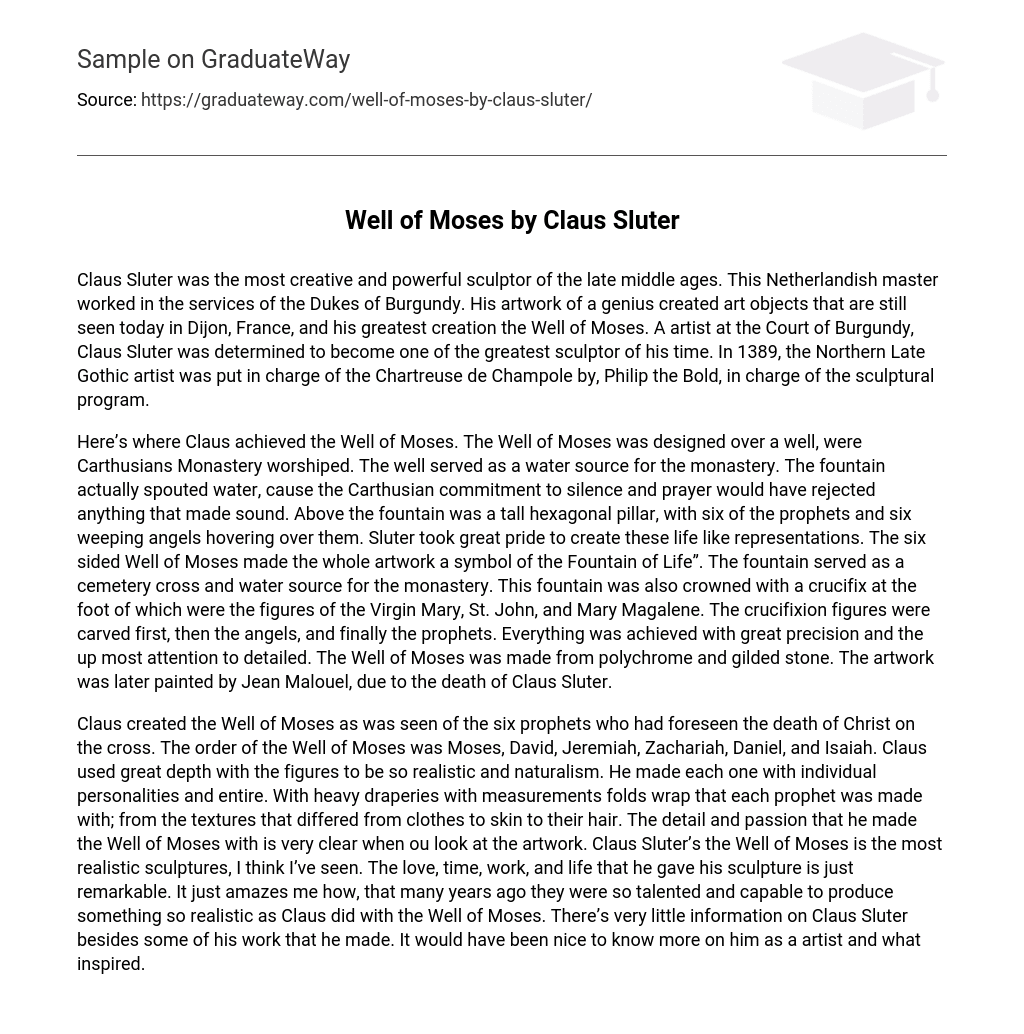Claus Sluter was the most creative and powerful sculptor of the late middle ages. This Netherlandish master worked in the services of the Dukes of Burgundy. His artwork of a genius created art objects that are still seen today in Dijon, France, and his greatest creation the Well of Moses. A artist at the Court of Burgundy, Claus Sluter was determined to become one of the greatest sculptor of his time. In 1389, the Northern Late Gothic artist was put in charge of the Chartreuse de Champole by, Philip the Bold, in charge of the sculptural program.
Here’s where Claus achieved the Well of Moses. The Well of Moses was designed over a well, were Carthusians Monastery worshiped. The well served as a water source for the monastery. The fountain actually spouted water, cause the Carthusian commitment to silence and prayer would have rejected anything that made sound. Above the fountain was a tall hexagonal pillar, with six of the prophets and six weeping angels hovering over them. Sluter took great pride to create these life like representations. The six sided Well of Moses made the whole artwork a symbol of the Fountain of Life”. The fountain served as a cemetery cross and water source for the monastery. This fountain was also crowned with a crucifix at the foot of which were the figures of the Virgin Mary, St. John, and Mary Magalene. The crucifixion figures were carved first, then the angels, and finally the prophets. Everything was achieved with great precision and the up most attention to detailed. The Well of Moses was made from polychrome and gilded stone. The artwork was later painted by Jean Malouel, due to the death of Claus Sluter.
Claus created the Well of Moses as was seen of the six prophets who had foreseen the death of Christ on the cross. The order of the Well of Moses was Moses, David, Jeremiah, Zachariah, Daniel, and Isaiah. Claus used great depth with the figures to be so realistic and naturalism. He made each one with individual personalities and entire. With heavy draperies with measurements folds wrap that each prophet was made with; from the textures that differed from clothes to skin to their hair. The detail and passion that he made the Well of Moses with is very clear when ou look at the artwork. Claus Sluter’s the Well of Moses is the most realistic sculptures, I think I’ve seen. The love, time, work, and life that he gave his sculpture is just remarkable. It just amazes me how, that many years ago they were so talented and capable to produce something so realistic as Claus did with the Well of Moses. There’s very little information on Claus Sluter besides some of his work that he made. It would have been nice to know more on him as a artist and what inspired.





